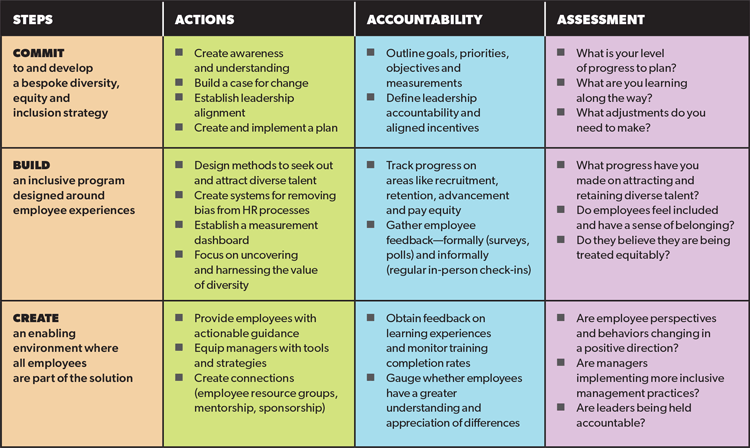
Diversity, Equity, and Inclusion
Back to Blog

April 4, 2023
As sociologist and researcher Dr. Evelyn R. Carter wrote in a recent article for Harvard Business Review, “DEI initiatives are futile without accountability.” DEI involves change, which is inherently difficult, and it is even harder if there is no way of knowing whether we have made progress. That is where accountability comes in.
Assessing our starting point, setting our goals and then determining how close we are to getting there can give us insight into how far we have come and provide the incentive that everyone needs to push forward. Critically, accountability shows that we take our responsibilities seriously and provides evidence that we are acting on our promises.
DEI accountability also helps reduce risk. When organizations clearly demonstrate and articulate accountability regarding DEI, they strengthen these initiatives and protect against reputation damage and associated risks. That is because they are providing proof through their actions that the organization places value on having diversity at all levels, and has enabled all employees to feel included and treated equitably.
“DEI initiatives are futile without accountability.”
DR. EVELYN R. CARTER, HARVARD BUSINESS REVIEW
Without accountability, it is easier to be accused of ignoring the needs of employees and the demands of customers, ultimately chipping away at the organization’s reputation. This has serious implications for the organization and its operations. For example, it could contribute to an eroding culture that affects recruitment and retention or, in extreme cases, could lead to cases of misconduct and harassment.
Having an effective approach to DEI accountability has the benefit of uniting employees and managers around a common goal. It also creates transparency, which is essential to foster trust with both employees and customers. It also helps stakeholders understand what is working, what is not working and where to make course corrections, leading to better results in the future.
While everyone is responsible for DEI, business leaders are at the forefront of organizing their teams to gather the evidence on DEI progress and turn that data into a compelling narrative that will show the organization’s commitment. Every organization has a unique history and culture, so there is no single approach that will work for all. Each organization must choose a set of strategies and accountability measures that will best help to meet the challenges and reveal the opportunities that come with creating a more diverse, equitable and inclusive organization. Along with the related model below, the following six strategies can help demonstrate DEI accountability:

1. Implement a three-step DEI accountability model. The model breaks down the accountability process into three parts: 1) committing to a strategy; 2) building a program; and 3) creating an enabling environment. Each step carries with it a set of actions, accountability measures and possible assessment questions. Note that this model is an example and that your measures and assessments may be different, depending on your organization’s needs.
2. Compile facts and feedback. Accountability can be broken down both quantitatively and qualitatively, and both methods are equally important. Using the model above as a guide, compile the data you have gathered on the measures that are most important to your organization. If this is your first effort, then this will help you to establish a baseline and look at how far you can move the needle in the future. At the same time, establish and maintain an ongoing feedback loop with both employees and managers, gathering their input and tracking progress.
3. Assess progress and identify gaps. Use the facts and feedback gathered to evaluate the level of progress you have been able to achieve. See the questions in the model and consider others such as: Where are your areas of DEI strength and weakness? What does employee feedback tell you about your workplace culture? Is leadership fully supportive? Are they prepared to be transparent with where you stand in your DEI journey?
For more information on Traliant’s DEI training click here.
Share
By
Veronica Bocian